[ad_1]
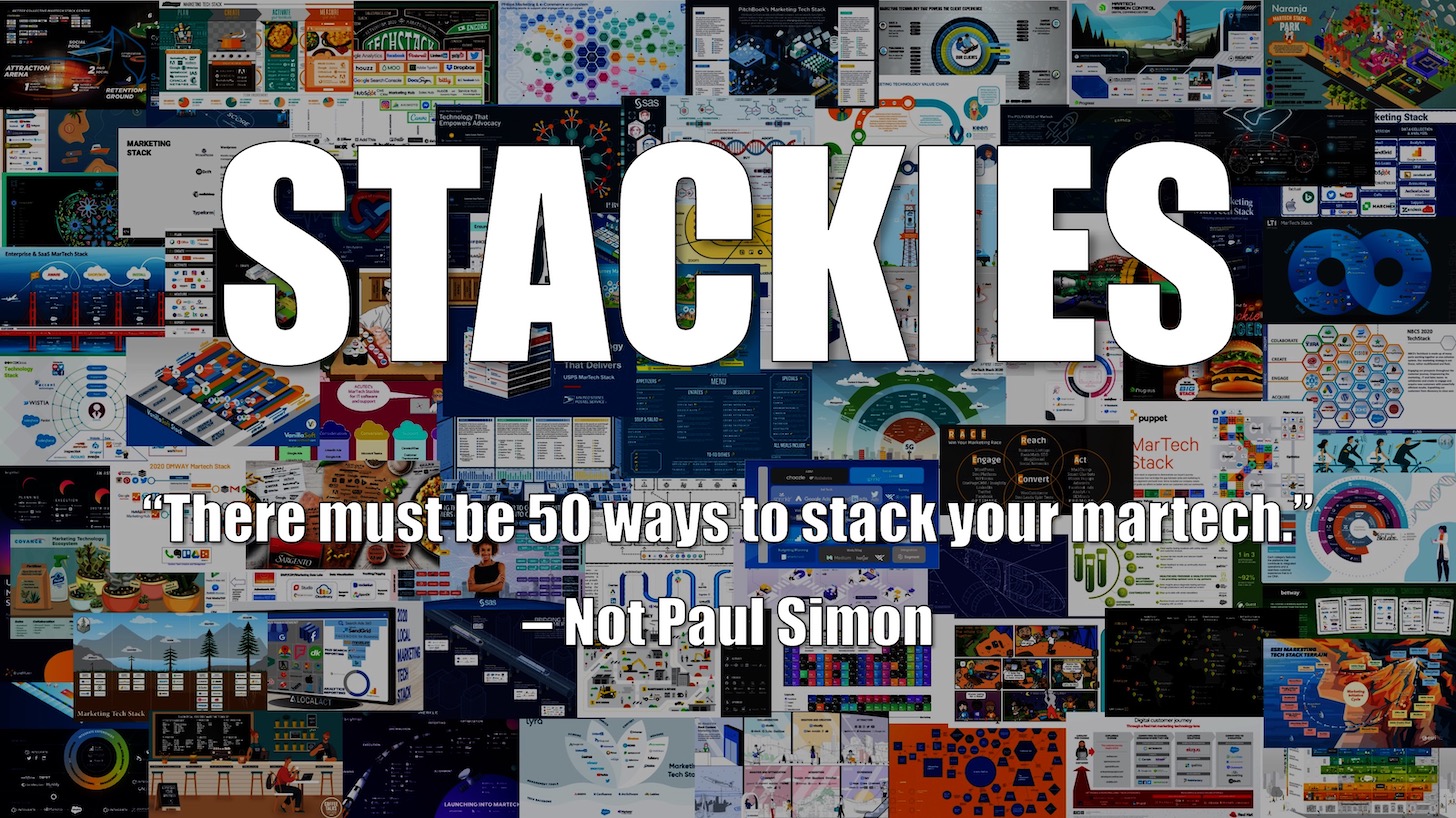
This is the 8th year we’re working The Stackies. It’s an awards system that invitations entrepreneurs to share a one slide illustrating their martech stack — the distinct applications and platforms they use and how they conceptualize them doing the job collectively.
I’d really encourage you to participate (deadline for entries April 29). It’s a amazing way to lead to our community’s comprehension of how martech matches into the functionality and movement of contemporary marketing and advertising.
Even so, even if you in no way share your stack exterior the partitions of your corporation, illustrating it can be an unbelievably useful work out to much better fully grasp it — and be equipped to demonstrate it to other stakeholders.
So what’s the finest way to illustrate your stack?
Turns out there are lots of methods, every single bringing a unique lens. Obtaining reviewed hundreds of entries to The Stackies more than the years — here are all of them from 2015, 2016, 2017, 2018, 2019, 2020, and 2021 — I have distilled 10 designs that I have seen on their own and in mixture jointly.
1. Seller Classification Map
Normally working with the taxonomy from our marketing and advertising engineering landscape, martech applications are structured into their product or service types and subcategories. It shows your stack by means of the lens of a vendor market place map and identifies the items you’ve selected. This is a wonderful way to analyze your over-all stack stock and show the span of martech remedies.
Here’s an example from SAS and their 2021 Stackie entry:
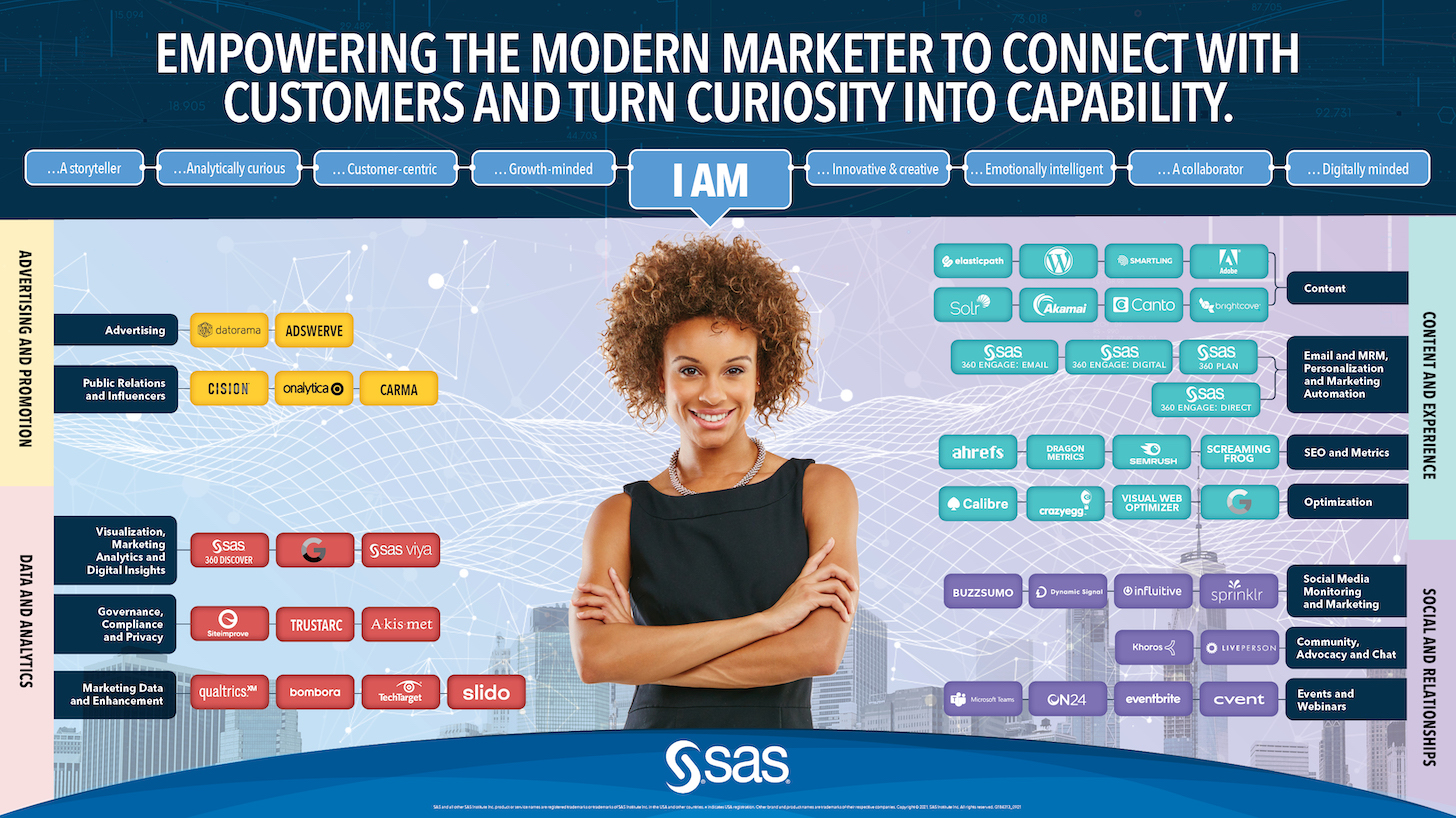
2. Customer Journey Map
Another common model is to align your martech stack against various stage of the customer’s journey. Typically for entries to The Stackies, the journey is simplified into 4-5 stages, such as Discover, Contemplate, Obtain, Onboard, and Expand.
This terrific case in point from Juniper Networks and their 2021 Stackie entry illustrates two dimensions: the shopper journey horizontally and the seller classes made use of vertically:
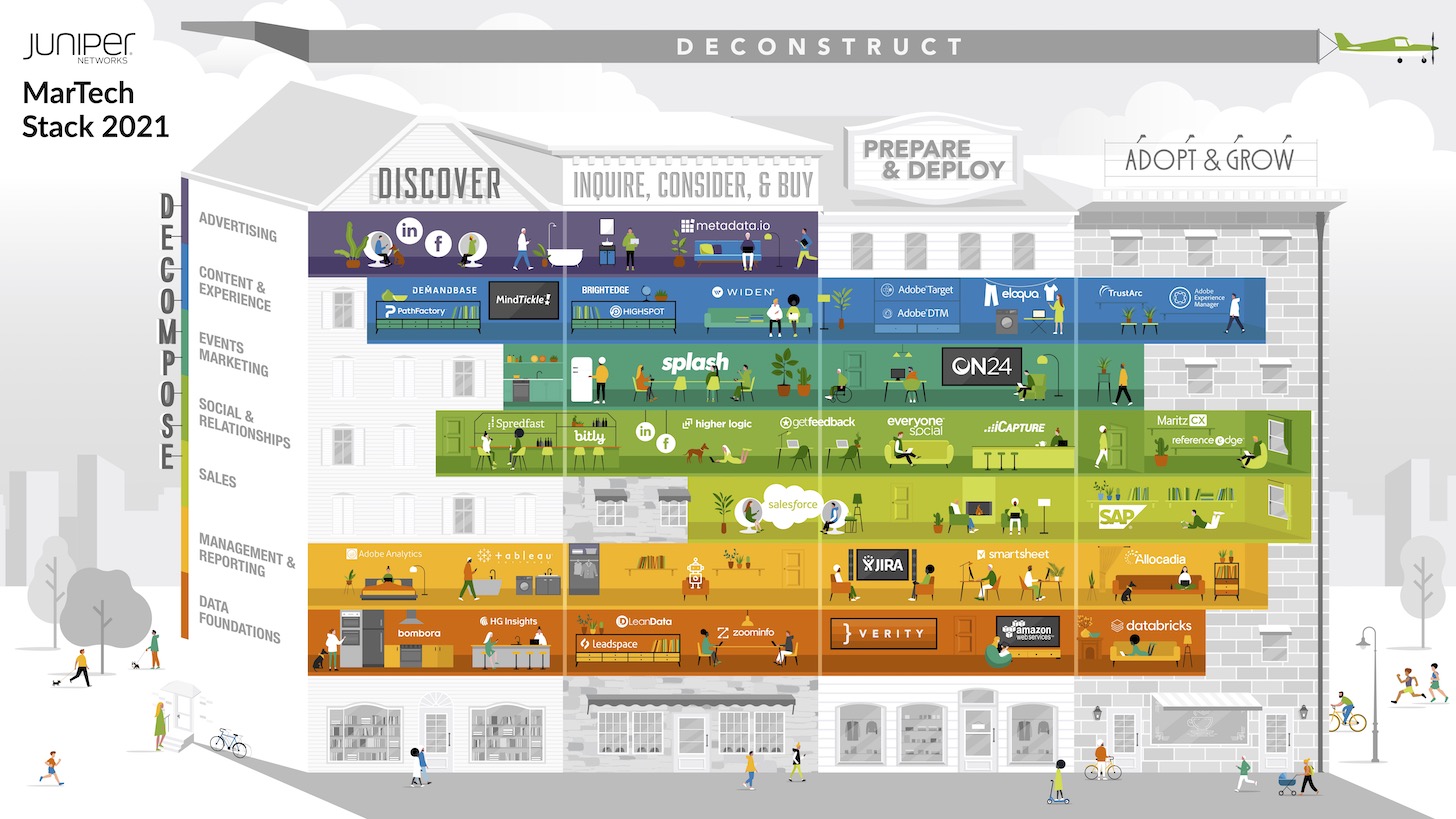
3. Back-Phase vs. Front-Stage
Another way of wanting at your stack is by way of a theater metaphor: back again-stage and front-phase apps and platforms. Front-phase apps directly touch the shopper — e.g., web ordeals, e-mail strategies, social media engagement resources, marketing, etcetera. Back again-phase apps are employed to provide inner stakeholders, this kind of as analytics, preparing, asset management, efficiency, etc.
This is an classy example from Red Wing Sneakers and their 2017 Stackie entry, with back-stage to entrance-phase categorization alongside the vertical access and shopper journey phase alongside the horizontal axis:

4. Operate or Part-Centered Map
Whilst martech stacks can be very significant, any one particular human being in the advertising department is unlikely to have to learn all of the apps inside of it. Distinct roles inside of advertising and marketing will use unique resources. So a further beneficial way of mapping your martech stack is to team applications by the roles or functions that use them. This is reveals the “who” dimension of your stack, which is helpful to see the interrelation among apps, capabilities, and outcomes.
This case in point from Bigtincan’s 2019 Stackie entry illustrates 3 major roles: website administration, marketing automation, and written content promoting:
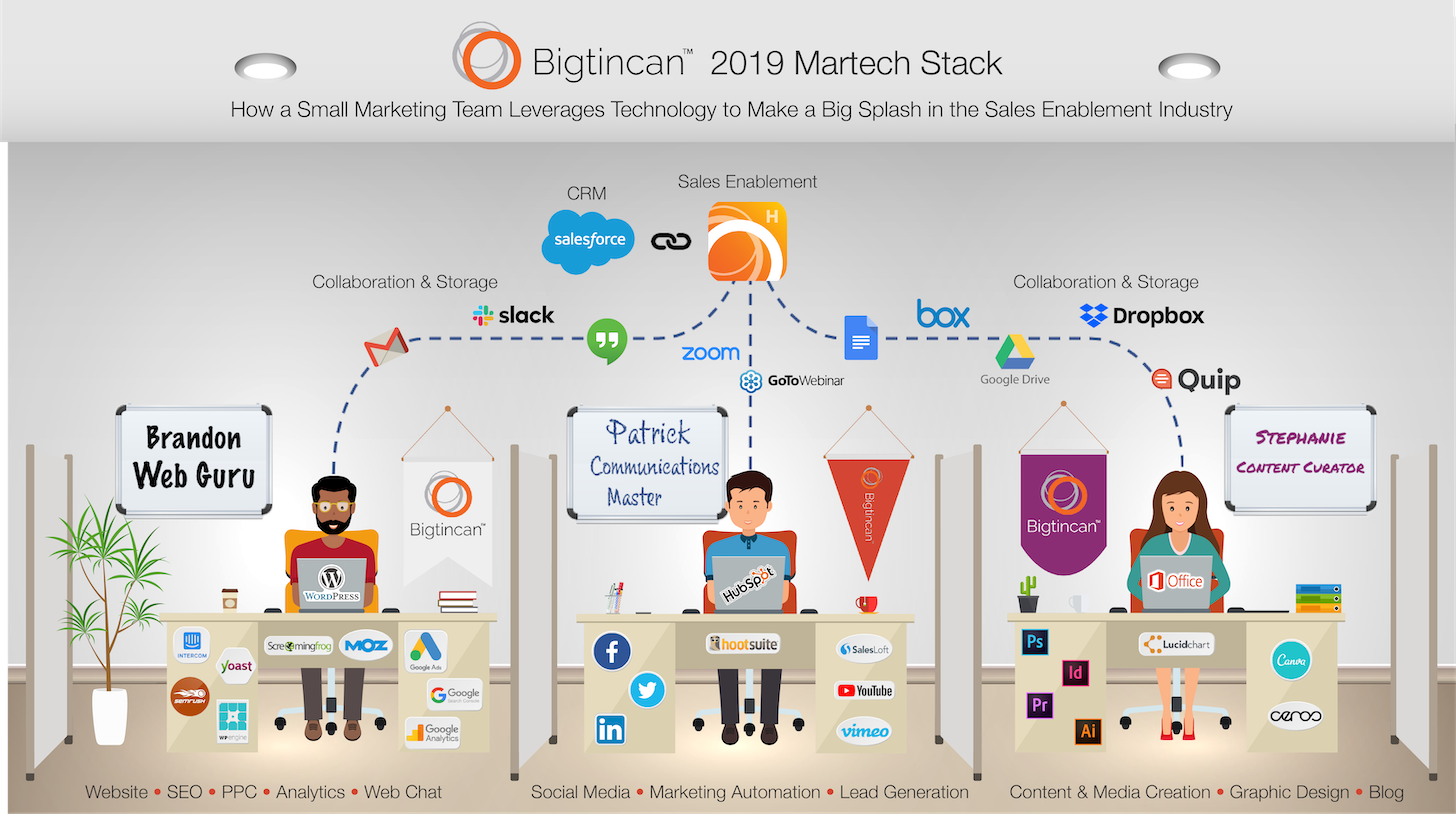
5. Level Solution/Platform Ecosystem Map
Integration is important to an efficient martech stack. One more fantastic way to visually examine your stack is to display the platform(s) that are the gravitational center(s) of your martech stack and which specialist apps integrate to each of them. It’s an ecosystem check out of your stack.
This illustration from Poly’s 2020 Stackie entry basically captures five distinctive proportions, which include relative financial commitment, paid/acquired/owned methods, seller group — and identifies platforms, built-in professional applications, and stand-by yourself issue options:

6. Usage Map (Relative Time in Applications)
Some martech apps are utilized consistently, as an integral aspect of marketing’s working day-to-working day operations. Other applications, nonetheless, are extra specialised and employed significantly less frequently. This does not signify they are not precious. They just have a time and place for their function. Pinpointing intensely-utilised main applications vs. lightly-used resources experts can be a different insightful way to recognize the composition of your stack.
This example from Airstream’s 2019 Stackie entry cluster apps mostly by their use circumstance — planning, resourceful, engagement, seller channel, and measurement — but the top of the pine tree icons represents the relative time entrepreneurs shell out interacting with every tool:
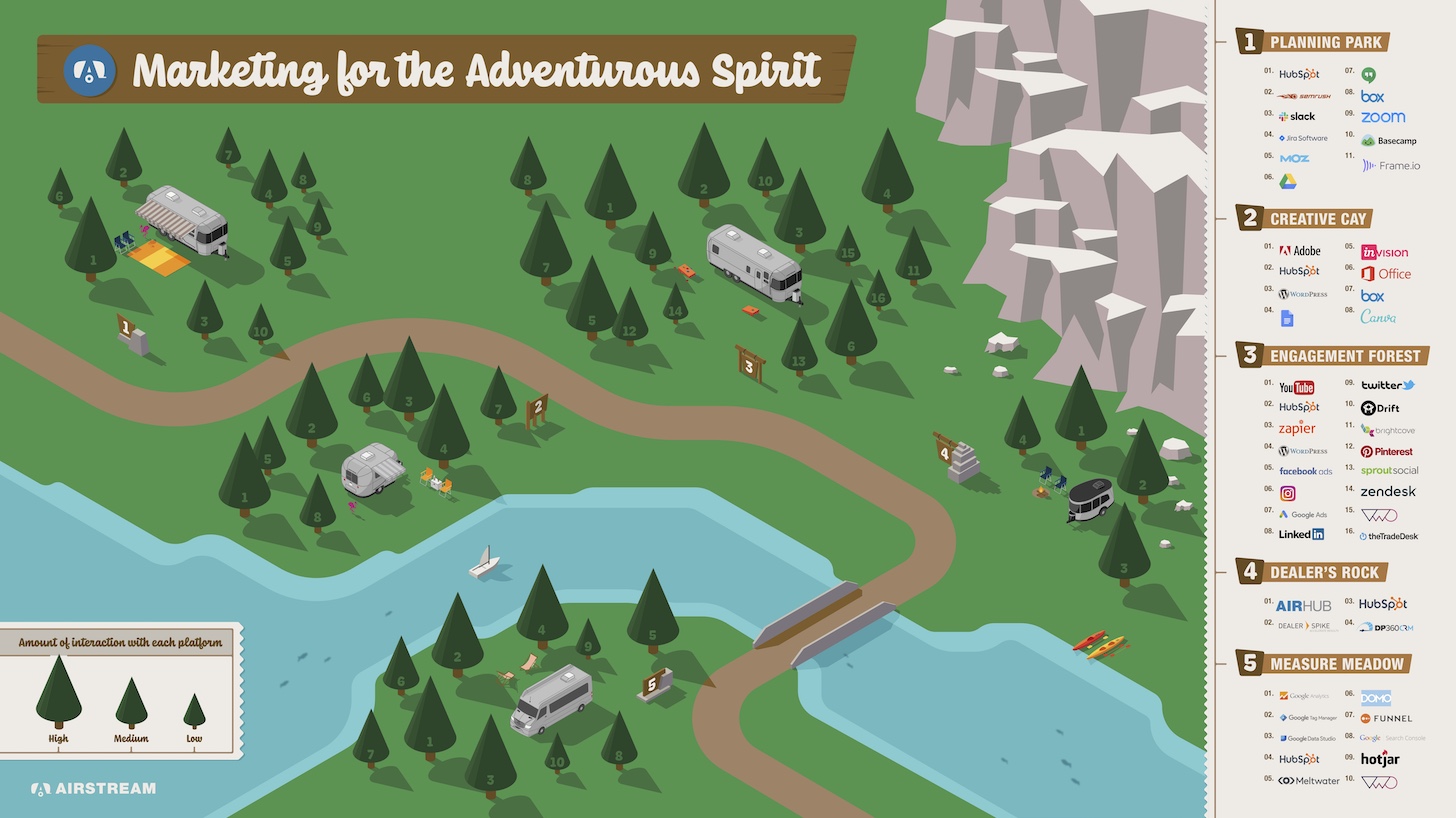
7. Relative Diploma of Automation
Even though considering the volume of time that users spend engaged with unique equipment in your stack, it is an attention-grabbing lens to examine how automated those tools are. Which resources are used primarily manually? Which types have considerable automations? This watch can be helpful the two to comprehend the relationship concerning tools and internet marketing course of action and functions. It can also help discover chances to automate.
Automation is the major frontier in Large Ops in my impression.
This case in point from Paychex’s 2019 Stackie entry maps out their martech apps on two proportions: distinct advertising and marketing capabilities and the degree to which they are automated:

8. Pace Layering of Platforms and Apps
In excess of a ten years back, as tech stacks in basic — not just martech — had been increasing fast, Gartner proposed a way to organize them by “rate layer.” They recommended a few levels: techniques of history, systems of differentiation, and systems of innovation.
Methods of record really should be extremely steady and have a slow pace of transform. They’re the platforms on which other application and products and services depend. Devices of differentiation embody the procedures and ordeals that make your business exclusive. They alter much more commonly, but are nevertheless relatively stable. Units of innovation are much more experimental, the position in which new capabilities can be designed and piloted promptly.
One of the finest Stackie entries was this 1 from Microsoft in 2017, which mapped instruments together the infinite loop of shopper journeys, but then also divided them into Gartner’s three speed layers:

9. Evolution of Martech Resources In excess of Time
Martech stacks really do not stand nonetheless. New resources are included. Outdated applications are replaced. This is element of the natural evolution of a business as it grows — and as the broader advertising and marketing and martech ecosystem continues to modify close to it. It can be helpful to look at your martech stack via the lens of its shifting app inventory more than time.
This illustration, sent in by reader John Schott in 2017, reveals a 5-year journey of a smaller monetary providers organization:

10. Related Abilities Map
At the intersection of teams and applications, abilities are formulated. Alternatively than looking at your stack by means of the lens of vendor classes, you can arrange a look at about unique capabilities, this kind of as marketplaces, user-created information, information syndication, qualitative and quantitative exploration, and many others. Mapping these capabilities in clusters, to display their adjacencies and relationships with each and every other provides you a image of the ecosystem all over your stack.
This 2021 Stackie entry from Philips is a terrific instance:

Other Means to Map Your Stack
Of study course, there are many other techniques to visualize other dimensions of your stack.
For occasion, you could organize it all-around aggregation systems in your martech stack. How are you horizontally aggregating data, workflow, knowledge, and governance across many unique apps, knowledge resources, and shopper touchpoints? Which equipment are you working with to vertically integrate all those layers in precise domains, these types of as CRM?
Alternatively, you may possibly illustrate your stack to emphasize the degree of customization within just different applications and platforms. They may range of purely out-of-the-box professional apps, to packaged merchandise that have been tailored or prolonged with your have code, to completely custom apps that are distinctive to your enterprise.
Just about every of these distinct approaches can give you unique insights into the character of your stack — and assist you connect them to stakeholders across your corporation.
What does your martech stack seem like?
Reminder: Even if you don’t enter The Stackies by yourself — despite the fact that we certainly hope you do — really don’t forget to indication up for the free webinar on #MartechDay, May perhaps 3. We’ll be unveiling the new 2022 martech landscape, releasing a Point out of Martech report, and celebrating the entrants and winners of this year’s Stackie Awards.
[ad_2]
Supply backlink





More Stories
Fatal Flaws in Your Business Plan
How to Create a Passive Income Today That Provides Incredible Financial Freedom For Tomorrow
5 Reasons Why You Need a Passive Income Stream